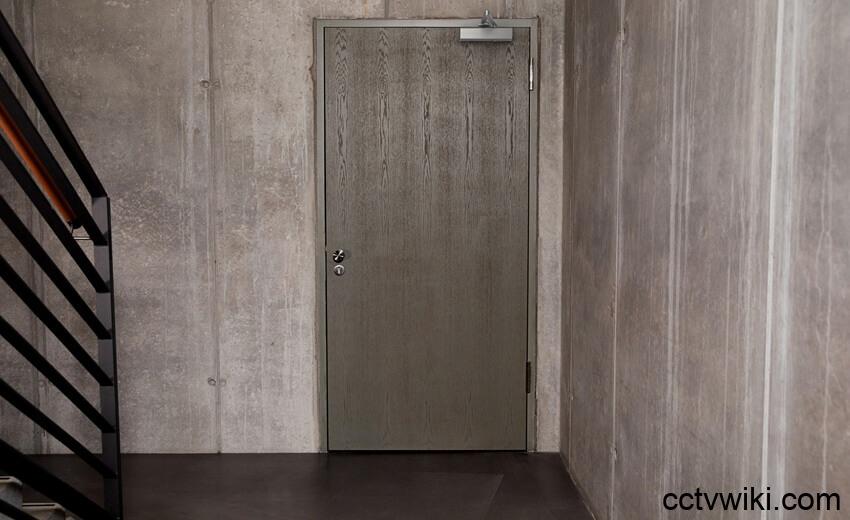A fire door is a silent guardian, a critical element in a building’s fire safety plan. But don’t be fooled – not just any solid door will do. True fire doors are meticulously tested and certified as complete systems, where every component, from the frame and hardware down to the seals and glazing, must adhere to strict specifications. Selecting the right doors requires specialized knowledge and access to a range of tailored solutions.
Fire doors work by heroically containing fire and smoke, keeping escape routes clear for as long as possible. They require no power or human intervention; they simply need to be closed and in good working order. Features like intumescent seals, which expand dramatically when exposed to heat, and specially designed fire-rated cores help maintain the door’s integrity and slow the fire’s relentless advance.
The world of fire doors is diverse, with types designed for various environments and boasting specific qualities to meet increasingly stringent safety standards. Many operate manually, while hinged fire doors can also be automated. In expansive, open spaces, fire curtains or sliding systems offer the same protection, automatically closing when an alarm is triggered.
Construction materials are another key consideration. In hotels, offices, and mixed-use commercial buildings, timber doors are often favored for their aesthetic appeal and acoustic performance. However, in industrial sites, data centers, or high-security zones, robust steel doors may be a safer bet. For wide openings in warehouses, airports, or car parks, sliding fire gates or curtains might be the ideal choice. To pinpoint the best solution for each unique space, expert specification support during the building’s design phase or even during retrofit planning is essential.
Like many modern building technologies, digitalization is making its mark on fire safety – and can be a game-changer in the right setting. Smart building systems can meticulously track fire doors, indicating whether they are closed, obstructed, or in need of maintenance. Fire doors and curtains can seamlessly link to alarms, automatically closing when needed, or connect with access control systems to maintain vital fire compartmentation. In complex environments such as hospitals or data centers, these integrated systems provide invaluable auditing and maintenance records, ensuring that doors are always primed and ready to perform.
The Importance of Certification and Expertise
Third-party certification of a fire door offers reassurance to building owners, architects, and insurers alike. It’s proof that the door has undergone rigorous testing, auditing, and consistent manufacturing to meet stringent safety standards – guaranteeing its performance in an emergency. Certification applies to all fire doors, whether timber or steel, as well as larger solutions like fire gates and curtains. Moreover, certification streamlines the approval process with building code authorities and demonstrates clear compliance with legal requirements.
Across Europe, fire doors are governed by EN 16034, with testing performed under EN 1634-1 for fire resistance and EN 1634-3 for smoke control. Hardware undergoes separate testing under EN 1634-2. In the UK, BS 476 remains recognized alongside EN standards. Fire curtains are tested to EN 1634-1, and where smoke control is necessary, to EN 12101-1 or EN 1634-3. EI-rated curtains effectively block both fire and heat transfer, while EW-rated systems, commonly used in the UK, prioritize integrity with reduced heat radiation. Testing always encompasses the entire system, including the door, frame, and hardware, to ensure seamless performance. To maintain this critical performance, installation must adhere precisely to certified details. A faulty installation can negate a door’s fire rating, even if all components are up to par.
Expert maintenance is another cornerstone of reliable performance. This includes diligently checking that seals, hinges, and closers are functioning properly and free from damage. Automatic fire curtains, sliding doors, and hinged doors require thorough testing of motors and controls. Many regulations mandate checks every six months. A fire door is only as effective as its maintenance; even a minor fault can have disastrous consequences in an emergency.
Specialist Fire Safety Solutions from ASSA ABLOY
ASSA ABLOY’s comprehensive portfolio of fire doors provides customers across a wide range of industries with a diverse selection of security doors to match their exact needs, without compromising on safety or performance.
“Martech specializes in engineering high-performance fire curtains for a multitude of applications,” explains Daniel Swannack, Chief Commercial Officer for the Door Business Segment at ASSA ABLOY Opening Solutions EMEIA. “In different ways, and for different types of building, Mercor, Portafeu, Metalind, Fichet, and HSD deliver industry-leading fire and technical door solutions tailored to their respective markets.”
“Choosing the right door and keeping it properly maintained is essential,” he adds. “Our role is to make the customer’s life easier in terms of compliance, performance and design flexibility. All our fire-specialist manufacturers share ASSA ABLOY’s deep commitment to safety, quality, reliability, and innovation. Their portfolio scale and expertise gives customers the convenience of a one-stop-shop for fire doors and peace of mind that their solutions are compliant.”

